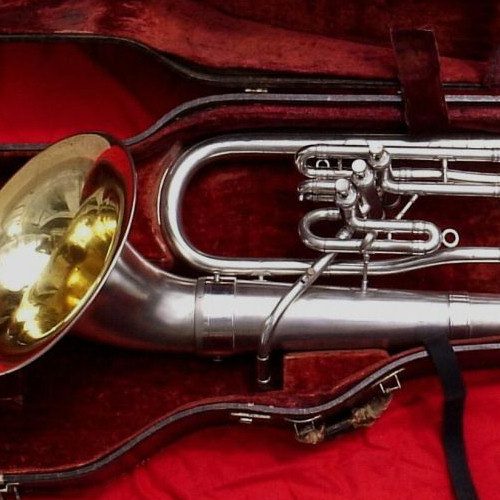
Baritones were a staple in the Reynolds catalog from beginning to end, and had some of the most variations of instrument configurations—upright vs front-facing bells, three or four piston valves, top-action vs side-action valve placement and compensating tuning mechanisms were all options at one time or another.
1936-1946
F.A. Reynolds (Cleveland, Ohio)
Because the "F.A. Reynolds" engraving on baritones (and other background and low brass instruments) is the same between domestic models and models created for the U.S. Army (see below), it is difficult to say whether an example was made for one or the other unless you can clearly see the "U.S." engraving near the bell rim (or not). I've included models below where the "U.S." is not visible and models where it is in the WW2 section, knowing that they may actually be the same.
F.A. Reynolds Baritone with removable, front-facing bell and three side-action piston valves; gold lacquer finish.
Note: the engraving pattern on this example is more ornate than typically seen on baritones and resembles those found on trumpets, cornets and trombones from 1936-46.
World War II
Throughout the 1940s, F.A. Reynolds Co. was awarded contracts by the U.S. Army Quartermaster for band instruments, becoming "a major source of supply for the Armed Forces during World War II." [1977 catalog] These instruments have a silverplate finish with unique engraving and a large "U.S." mark near the rim of the bell. Known serial numbers date production from between 1940 and 1952.
These contracts allowed the relatively new company to continue focusing on making band instruments when more-established manufacturers, e.g., F.E. Olds and Conn, were forced to shut down instrument lines and produce wartime equipment. Details of the contracts are not available, and it is not specified which service bands received the instruments, though anecdotal evidence suggests that the bands of the U.S. Army Air Forces (USAAF) may have been recipients, having just organized in 1941.
F.A. Reynolds Baritone with fixed upright bell and three top-action valves (model 110); US military engraving and silverplate finish (SN 6142, c.1942)
Note: in the lower right photo included in this montage, there is a faint suggestion of what could be the "U.S." engraving, but it's in a damaged area and I can't be sure. The photo with the case does have a "U.S." stencil, however, which is consistent with other military models.
1946-1952
F.A. Reynolds, division of Scherl & Roth (Cleveland, Ohio)
The Contempora line launched in 1949 with new trumpet and bass trombone models, followed by cornet and tenor trombone. A year later, most original "F.A. Reynolds" instruments had been rebranded on paper as "Contempora" instruments, including the Baritones, though they were frequently referred to as "Reynolds baritones" throughout the 1950s. It is undetermined if the "Contempora" name was engraved prior to 1952 (Roth-Reynolds), so many of these instruments may look the same as the F.A. Reynolds models.
The core Reynolds baritone line consisted of upright bell and bell front models, each with either three or four standard piston valves. As early as c.1950, Reynolds was experimenting with additional tuning mechanisms that provided finer pitch control than normally available through setting each valve's tuning slides. Model 120T added a tuning trigger to compensate individual notes played with the first valve—a similar mechanism had been added to Contempora trumpets and cornets. Model 120H attached a mechanism to the main tuning slide, the function of which was adapted to the trumpets and cornets on the "Diatonic" models, later "Renascence".
Here are the real "guts" of the band and, yes, in many cases the orchestra. Reynolds designs its baritones and recording basses to entirely fulfill that dual purpose. Reynolds builds into these deep-throated instruments with unerring purpose a full, rich luscious tone ... in the baritone a remarkable similarity to the human voice ... and in the recording bass a deep and gusty likeness to—yes—the greatest of the vocal basses.
Model 120
Contempora Baritone—Bell Front
Bore: TBD
Bell: 11½", adjustable, detachable front-facing bell
Valves: three side-action piston valves
Materials: brass
Finish: polished brass with clear lacquer finish; optional silverplate with bright bell or gold bell finish
The example above is c.1950 and has what appears to be bronze-alloy top and bottom valve caps as well as water keys. Use of bronze for accents has been seen on other Contempora instruments as well.
Model 120T
Contempora Baritone—Bell Front with Valve Slide Trigger
Bore: TBD
Bell: 11½", adjustable, detachable front-facing bell
Valves: three side-action piston valves; with compensating trigger on first valve slide
Materials: brass
Finish: polished brass with clear lacquer finish; optional silverplate with bright bell or gold bell finish
Model 120H
Contempora Baritone—Bell Front with Tuning Slide Trigger
Bore: TBD
Bell: 11½", adjustable, detachable front-facing bell
Valves: three side-action piston valves; with compensating trigger on main tuning slide
Materials: brass
Finish: polished brass with clear lacquer finish; optional silverplate with bright bell or gold bell finish
Another outstanding achievement of mastercraft band instrument building. [The Reynolds Bell Front Baritone] has won the acclaim of music people everywhere for its graceful design, perfect balance, superfine valve action and ease of playing. Its detachable bell is adjustable. The overall length is 32 inches; bell diameter 11½ inches; weight 7 lbs. 14 ozs. Truly an outstanding instrument.
1952-1961
Roth-Reynolds (Cleveland, Ohio)
After 1952, the baritones should be engraved with "Contempora" and "Made by Roth-Reynolds". Model 120T does not appear to have lasted long, though a similarly described trigger appears on low brass tubas and recording basses in the 1950s.
The beauty and individuality of the counter-melodic baritone parts demands a superlative instrument ... the Reynolds Contempora Baritone. The exacting standards of Contempora result in a Baritone of exceptional character. Full rich tone; and, most important, an ease of playing that allows the performer tremendous freedom with difficult passages. Possessed of great power, the Contempora Baritone can speak above the entire band, yet execute pianissimo passages that blend perfectly in ensemble playing.
Model 110
Contempora Baritone—Upright Bell
Bore: TBD
Bell: 11½", fixed upright bell
Valves: three top-action or side-action piston valves; optional fourth valve
Materials: brass
Finish: polished brass with clear lacquer finish; optional silverplate with bright bell or gold bell finish
Model 120H
Contempora Baritone—Bell Front with Diatonic "Tune As Your Play" Tuning Slide Trigger
Bore: TBD
Bell: 11½", adjustable, detachable front-facing bell
Valves: three side-action piston valves; compensating mechanism on main tuning slide; optional fourth valve
Finish: polished brass with clear lacquer finish; optional silverplate with bright bell or gold bell finish
Reynolds DIATONIC 'Tune-As-You-Play' Baritone Model 120-H. The baritone of perfect intonation. Compensating mechanism on tuning slide achieves complete control of all registers. Adopted by leading university and college bands. Complete in shaped case.
The trigger mechanism for the baritone was developed to enable players to bring out-of-tune notes into good tune without favoring the notes with the lip and throat. The trigger enables the player to increase or decrease the length of tubing to alter the pitch. He can, therefore, "blow through the center of the tone" and consequently can play an even-balanced scale in good tune.
1961-1964
RMC/Reynolds (Cleveland, Ohio)
Sometime after Richards Music purchased Reynolds in 1961, the product catalog was reorganized. Old model numbers were replaced with a new scheme that incorporated an abbreviation for the type of instrument, e.g. "FE" for French Horn, and a hierarchal numbering system that reflected the grade of instrument, e.g. "01" for top-level artist instruments, "56" for student horns. To the best of knowledge, the instrument specifications did not change, just the model numbers. The new numbering system was used for the rest of the company's history.
Model BR-01
Diatonic Baritone—Bell Front, 3 Valves
Bore: .560"
Bell: 11¼", adjustable, detachable front-facing bell
Valves: three side-action piston valves; compensating mechanism on main tuning slide
Materials: brass
Finish: polished brass with baked epoxy finish
Model BR-02
Same as Diatonic BR-01, with four valves
Diatonic—The finest of all Reynolds baritones is offered in four different models. All have in common a magnificent range and tone with exclusive, adjustable double-action compensating mechanism on the main tuning slide that enables the performer to raise or lower the pitch of any note within the entire range of the instrument. This is the choice of leading university bands. It may be had with three or four valves and detachable bell front or upright.
Contempora—A fine concert baritone, offered in two models (either detachable bell front or upright), this instrument is remarkable for the tremendous power and tonal color that can be produced with relatively little effort. Three-valve, side action.
Model BR-15
Contempora Baritone—Upright Bell, 3 Valves
Bore: .560"
Bell: 11¼", detachable upright bell
Valves: three side-action piston valves
Materials: brass
Finish: polished brass with baked epoxy finish
1964-1970
Reynolds (Fullerton, Calif.; Abilene, Texas)
After CMI purchased the assets to Reynolds, background and low brass instruments were produced at the Reynolds factory in Abilene, Texas. There were slight adjustments to the model specifications compared to the Cleveland instruments.
Model BR-01
Diatonic Baritone—Bell Front, 3 Valves
Bore: .560"
Bell: 11¼", adjustable, detachable front-facing bell
Valves: three side-action piston valves; compensating mechanism on main tuning slide
Materials: brass
Finish: polished brass with baked epoxy finish
Model BR-02
Same as Diatonic BR-01, with 4 valves
Model BR-03
Diatonic Baritone—Upright Bell, 3 Valves
Bore: .560"
Bell: 11¼", detachable upright bell
Valves: three side-action piston valves; compensating mechanism on main tuning slide
Materials: brass
Finish: polished brass with baked epoxy finish
Model BR-04
Same as Diatonic BR-03, with 4 valves
[Diatonic Models BR-01/02 are] the finest of all Reynolds Baritones, with a truly magnificent range and tone. Exclusive adjustable double-action compensating mechanism on main tuning slide enables performer to raise or lower pitch of any note within the entire range of the instrument. Removeable bell front.
Outstanding concert baritones, remarkable for producing tremendous power and tonal color with relatively little effort. Removable bell front.
1970-1979
Reynolds (Fullerton, Calif.)
In 1970, Reynolds merged production lines with Olds in Fullerton and sold the Abilene plant to Conn. In most cases, a horn would come off the California production line and become either a Reynolds- or Olds-branded instrument based on detailing and finish.
Model BR-01
Diatonic Baritone—Bell Front, 3 Valves
Bore: .560"
Bell: 11¼", adjustable, detachable front-facing bell
Valves: three side-action piston valves; compensating mechanism on main tuning slide
Materials: brass
Finish: polished brass with baked epoxy finish
Model BR-02
Same as Diatonic BR-01, with 4 valves
Model BR-05
Contempora Baritone—Bell Front, 3 Valves
Bore: .560"
Bell: 11¼", adjustable, detachable front-facing bell
Valves: three side-action piston valves
Materials: brass
Finish: polished brass with baked epoxy finish
Model BR-06
Same as Contempora BR-05, with 4 valves
Model BR-09
Contempora Baritone—Bell Front, 3 Valves
Bore: .560"
Bell: 11¼", fixed front-facing bell
Valves: three side-action piston valves
Materials: brass
Finish: polished brass with baked epoxy finish
Mellow tone quality, quiet valve action and flawless response make this baritone an instrument for the advanced student musician. Features hand-lapped valves and rapid response. [BR-061] features four valves for increased range and flexibility. Free blowing with a mellow tone quality, high response and excellent intonation. Hand-lapped valves for smooth action.
The purpose of this website is to preserve the history of the F. A. Reynolds Company and the distinctive qualities of its brass instruments. Contempora Corner and contemporacorner.com are not related or associated in any way to the former or current F.A. Reynolds Company.
Copyright © 2004-2024 ElShaddai Edwards. All Rights Reserved. Terms of Use.


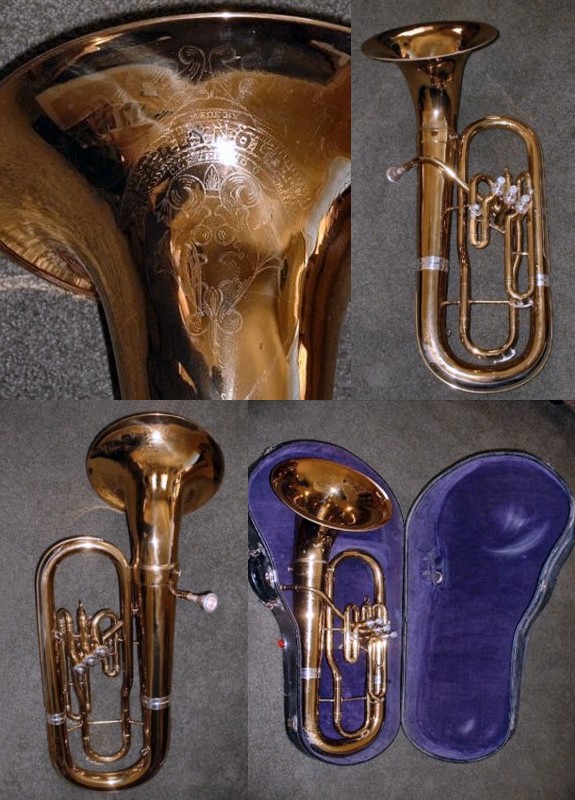



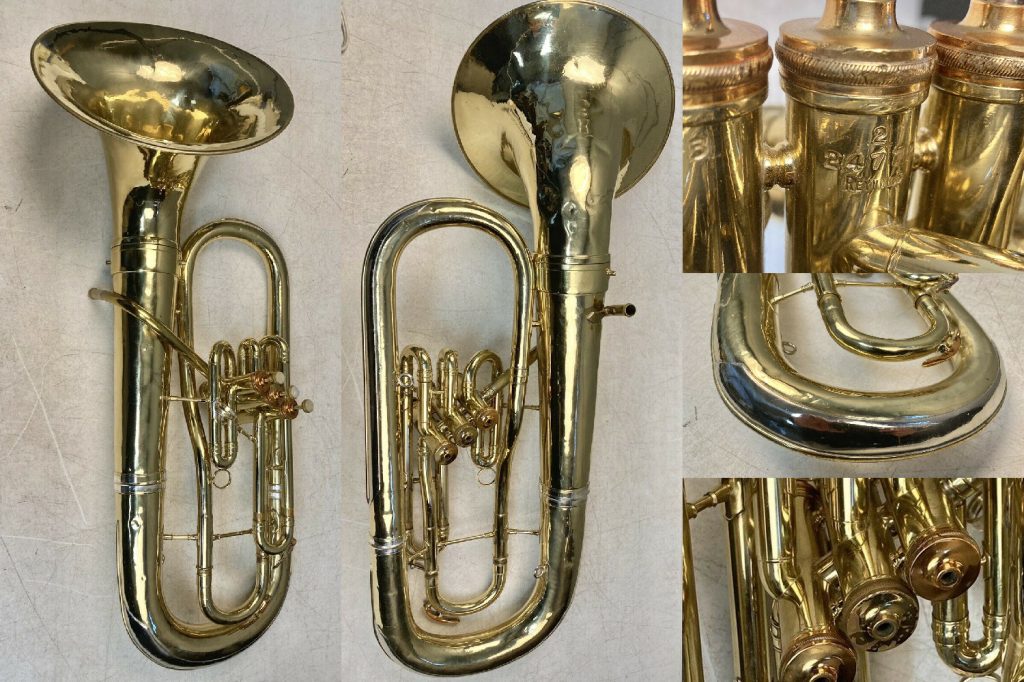



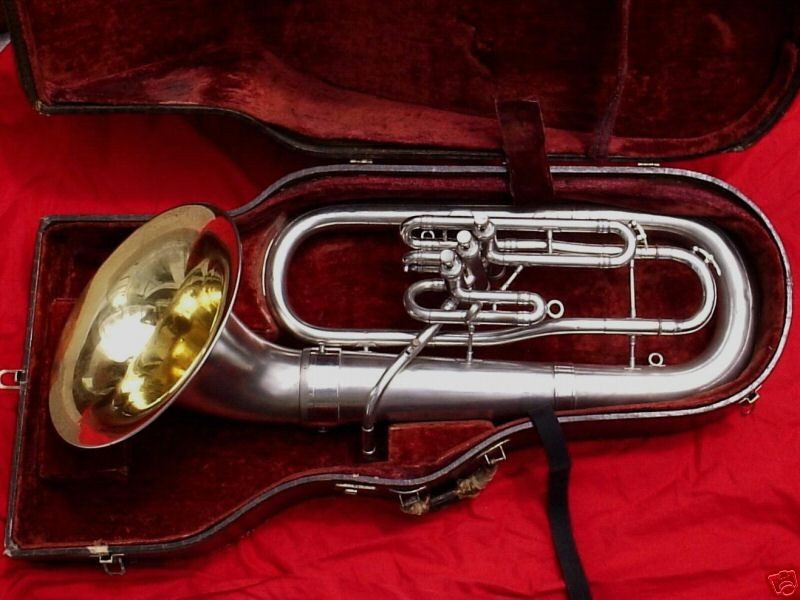


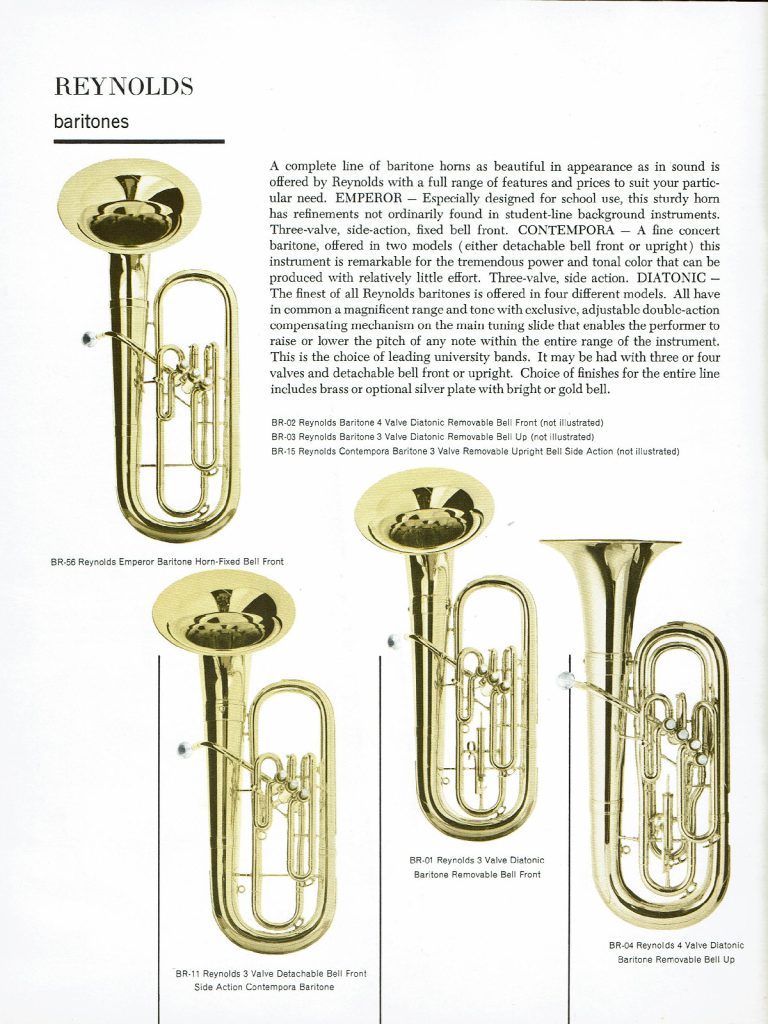




![Model BR-07 [SN 241110]. Photo source: eBay](https://contemporacorner.com/wp-content/uploads/2009/01/241110.jpg)